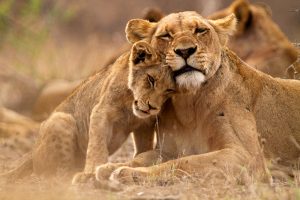Swaziland, known as the Kingdom of Swaziland is also called Ngwane or Swatini. Its neighboring countries include South Africa in the north, west, and southern part and Mozambique in the east. This is only a small country with an area of 6704 square miles from north to south, and its population is only 1,185,000 in the year 2009. People living in the country are called Swazis and they received their independence in1968. Some of the country’s pride includes the Harvest Festival, Swaziland Festival of the Arts, Festival of the First Fruits, and the Reed Dance.
Travelers visiting South Africa, particularly Kruger National Park, can make a day excursion into Swaziland and experience some of the many nature attractions the country has to offer.
Sibebe Hiking Trails
Sibebe Hiking Trails is a hiking trail that passes through the private agricultural land which is about four kilometers from the Sibebe Rock. The path passes through the old rural villages, waterfalls, streams, and caves. Its main entrance is near Mbabane where you will be asked to pay the entrance fee but will be able to leave your vehicle and get maps for the trails. This hiking trail is being appreciated by mountaineers due to its accessibility and breathtaking views. To get to the top, you will be hiking for forty-five minutes but will surely pay off once you are on top.
Mkhaya Game Reserve
Mkhaya Game Reserve was founded in 1979 with the purpose of saving Nguni castle to extinction. It is located on the central part of Swaziland and is covered with acacia in the south and broadleaf in the northern part. Bird species found here are Turaco, Kingfisher, Trogon, and Bush-shrikes.
For its wildlife, you can find hippos, antelopes, black and white rhinos, elephants, and buffaloes which will satisfy your viewing pleasure. To explore more of the area, you can take advantage of its safari walks which can also give you a close encounter with wildlife. The best time to visit is between the months of September to April which is the summer season.
Milwane Wildlife Sanctuary
Milwane Wildlife Sanctuary is the country’s first conservation area with an area of 4,500 hectares. Originally, it belonged to the Reilly family who has witnessed the diminishing wildlife. It was only 450 hectares at that time, and to make it a good place for wildlife, this family planted trees, created wetlands, and added several animals.
After that, the area was donated to Milwane personally in 2018 wherein developments were continued. Currently, it has grown ten times the original size, and living species have grown tremendously. To make it a total experience for visitors, walking along different trails, biking, swimming, horse riding, off-road adventures, camping, and trekking are just some of the outdoor activities available.
Kruger National Park
 Kruger National Park inhabits several forms of wildlife which include but not limited to lions, antelopes, martial eagles, storks, herons, monkeys, spiders, zebras, water lilies, fever trees, magic guarri, red bushwillow, palm trees and many more to name. Since this area is rich with wildlife, it is popular for a genuine safari experience, bird watching, viewing sunsets and sunrises, picture taking and walking. Although it is not in Swaziland, it is an possible day trip outside of the country into one of Africa’s most prized possessions.
Kruger National Park inhabits several forms of wildlife which include but not limited to lions, antelopes, martial eagles, storks, herons, monkeys, spiders, zebras, water lilies, fever trees, magic guarri, red bushwillow, palm trees and many more to name. Since this area is rich with wildlife, it is popular for a genuine safari experience, bird watching, viewing sunsets and sunrises, picture taking and walking. Although it is not in Swaziland, it is an possible day trip outside of the country into one of Africa’s most prized possessions.
It is perfect for families, couples, backpackers, adventurers, and several types of visitors. If you visit this plan, you can choose from a variety of packages that they offer to depend on the experience that you are looking for. There are so many things to do in Kruger National Park and you will surely get the travel experience you are looking for.
Kruger National Park is actually not in Swaziland, however, the borders of the park and country are together. Someone in search of encounters with nature which be remiss in not visiting Kruger while exploring time in Swaziland.
Malolotja Nature Reserve
Malolotja Nature Reserve, which means “river with many waterfalls and rapids”, is covering an area of 18,000 hectares with forests, mountains, and deserts. It is also the place for the world’s oldest rock compositions. The whole park is composed of two areas namely Malolotja Falls at 90 meters and the Ngwenya Mountain at 1829 meters.
Its Flora and Fauna are very diverse where you can find several species of birds, reptiles, and a hundred species of plants. If you go down to the south, you will find a mine named Ngwenya which is known to be the world’s oldest mine. Inside of the mine are smectite and hematite believed to be 45,000 years old. If you are into adventure, you can try the hiking trails, visit the bird sanctuary, discover the beauty of mine, and visit exhibits at the museum.
